2013

Implementation of Urban HEART
Under the City Wide Investment Plan in the Philippines, Urban HEART has been recommended as the tool for assessing and monitoring health in cities. Urban HEART was piloted in 7 cities across the country in 2008-09 with cities setting up ordinances to sustain the application of the tool.
Cities which piloted Urban HEART in Philippines
- Davao
- Naga
- Olongapo
- Parañaque
- Tacloban
- Taguig
- Zamboanga
Evaluation of Urban HEART
With the cooperation of respective authorities in Indonesia, Islamic Republic of Iran, Kenya, Mongolia, Philippines, Sri Lanka and Vietnam, an independent evaluation on the process of piloting Urban Health Equity Assessment and Response Tool (Urban HEART) was conducted for 15 cities in 2011–2012.
These independent evaluation reports will serve as a useful resource for stakeholders who want to learn from the experience of cities in different contexts in utilizing the tool to address health inequities. The evaluation will also provide important lessons for WHO to better support cities in implementing Urban HEART.
- Urban HEART Evaluation Report Indonesia
- Urban HEART Evaluation Report Iran
- Urban HEART Evaluation Report Kenya
- Urban HEART Evaluation Report Mongolia
- Urban HEART Evaluation Report Philippines
- Urban HEART Evaluation Report Sri Lanka
- Urban HEART Evaluation Report Viet Nam
Urban HEART around the world

Nakuru, Kenya
Inequities in access to basic services and infrastructure was revealed in the process of piloting Urban HEART in Nakuru, Kenya

Tehran, Iran
Tehran, Iran, has conducted a survey on Urban HEART indicators which is representative of its 22 municipalities, enabling an in-depth analysis of inequities
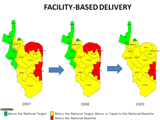
Parañaque city, Philippines
In Parañaque city, Philippines, Urban HEART results enabled municipal authorities to identify priorities, not only in health, but also in related determinants of health.

Visit of Dalian City Officials to WHO Kobe Centre 25–26 April 2013
In collaboration with the Government of Japan’s Ministry of Health, Labour and Welfare, the Japan International Cooperation of Welfare Services and WHO Country Office in the People’s Republic of China, WHO Kobe Centre received the fellowship visit of four officials from Dalian City, China on 25-26 April 2013.
During the two-day visit, WHO Kobe Centre provided the Chinese officials with an overview of the Centre’s research work, specifically in Intersectoral Action (ISA) for Health: Smoke-free cities, healthy urban planning and public health, health emergency management and a brief training on Urban Health Equity Assessment and Response Tool (Urban HEART). The guests were also accompanied by WKC to the Great Hanshin-Awaji Earthquake Memorial.
The visit was concluded with an assurance from both parties to continue communicating and exploring future research projects based on mutual interest.
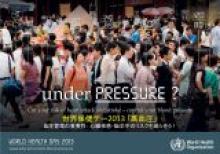
WKC Forum report “Control your blood pressure: for your healthy life” in commemoration of the World Health Day
In commemoration of this year's World Health Day, the WHO Centre for Health Development (WHO Kobe Centre - WKC) organized a forum “Control your blood pressure: for your healthy life” in Kobe on 7 April 2013.
Every year, World Health Day is celebrated on 7 April to mark the anniversary of the founding of the World Health Organization (WHO) in 1948. World Health Day is a global campaign, inviting everyone – from global leaders to the public in all countries – to focus on a single health challenge with global impact. The theme changes each year.
On the World Health Day itself, 7 April 2013, WKC and local partners focused on the global problem of high blood pressure. Though it affects one in three adults worldwide, high blood pressure remains largely hidden. Many people do not know they have high blood pressure because such does not always cause symptoms. As a result, it leads to more than nine million deaths every year, including about half of all deaths due to heart disease and stroke.

More than 40 participants came to the WKC forum from the general public and local governments to learn the risks of and to know how to prevent and control high blood pressure. The 90-minute forum highlighted the importance of promoting healthy lifestyle – reducing salt intake, having regular exercise and checking blood pressure on regular basis.
Dr Yoshio Iwashima, National Cerebral and Cardiovascular Center, presented on hypertension from a medical doctor’s point of view. He defined hypertension when systolic blood pressure is equal to or above 140 mm Hg and/or a diastolic blood pressure equal to or above 90 mm Hg. Yet, in Japan, he mentioned that the blood pressure is considered to be raised or high when systolic blood pressure is equal to or above 135 mm Hg and/or a diastolic blood pressure equal to or above 85 mm Hg if it is measured at home.
Dr Iwashima emphasized that high blood pressure could increase risks of heart attack, stroke and kidney failure. He also mentioned high blood pressure as a risk factor that may cause dementia. To prevent risks of high blood pressure, he stressed the importance to regularly check one’s blood pressure and to reduce salt intake as the primary prevention of heart diseases is through healthy diet and lifestyle. “It is also important to control daily stresses to reduce risks of high blood pressure”, he emphasized.
Professor Hatsumi Kanzaki, Research Institute of Nursing Care for People and Community, University of Hyogo, presented the prevention and control of high blood pressure through self-care. She stressed the importance to know each person’s blood pressure. Although it is important to take medication as prescribed by a doctor, medication can be stopped in due course, based on a doctor’s advice, if high blood pressure has already been controlled and the patient is young, keeps a moderate body weight, stops drinking alcohol, has low salt intake, stops smoking or/and has no other concomitant sickness. Although it is normal to see the blood pressure being raised as one ages, Professor Kanzaki stressed the importance of having healthy diet and life habits to prevent and reduce risks of high blood pressure.
 Following the presentations, Mr Yukio Motoki, Adviser for Kobelco Steelers (Kobe Steel Rugby Club), discussed hints and tips in order to have a healthy diet and lifestyle so as to enjoy sports and reduce risks of developing high blood pressure. He advised the audience to have enough water and minerals during exercise. He also mentioned the importance of stress control and advised the audience not to force themselves (Japanese context) to follow steps to reduce blood pressure as it may cause more stress. “Living a healthy and active lifestyle is key”, he stressed.
Following the presentations, Mr Yukio Motoki, Adviser for Kobelco Steelers (Kobe Steel Rugby Club), discussed hints and tips in order to have a healthy diet and lifestyle so as to enjoy sports and reduce risks of developing high blood pressure. He advised the audience to have enough water and minerals during exercise. He also mentioned the importance of stress control and advised the audience not to force themselves (Japanese context) to follow steps to reduce blood pressure as it may cause more stress. “Living a healthy and active lifestyle is key”, he stressed.
After the forum, “Machi no Hokenshitsu”(town health room) event was held at the venue in cooperation with the Hyogo Nursing Association. Most of forum participants joined in the blood pressure check, and actively discussed their blood pressure with and received individual health advises by nurses from the Hyogo Nursing Association.
Presentations
- "Hypertension prevention and control: for your better life" (Japanese)
Dr Yoshio Iwashima, Division of Hypertension and Nephrology
National Cerebral and Cardiovascular Center - "Hypertension prevention and control: for your care/effort at home" (Japanese)
Dr Hatsumi Kanzaki, Research Institute of Nursing Care for People and Community
WHO Collaborating Centre for Nursing in Disasters and Health Emergency Management, University of Hyogo
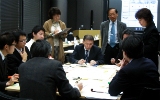
WHO Kobe Centre Offered the Leadership Training Course for Urban Emergencies
WHO Kobe Centre pilot tested its newly developed training course for city health emergency managers last 24 February at the Kobe City Emergency Operations Centre. There were 20 participants from Hyogo Prefecture who attended the training course entitled: City Leadership in Health Innovations and Technologies in Emergencies otherwise known as City LHITE.
The course aims to provide health and health related professionals working in cities/urban areas involved in emergencies and disasters with knowledge and understanding of the concepts, principles and strategies of urban health emergency management and the utilization of innovations and technologies in disaster operations. The course is composed of three modules covering: health emergency management principles, leadership in health emergencies and innovations/technologies in emergencies. The course is heavy on group work to ensure a participatory approach to learning and to ensure sharing of actual field experiences of the trainees. A training package was provided to the participants which contains technical input on the various topics.
Experts from national and prefectural agencies provided inputs on the latest approaches to health emergencies in Japan like the Emergency Medical Information System (EMIS), Disaster Medical Assistance Team (DMAT) training and the public health centres leadership course . They provided the valuable case studies on experiences from recent emergencies in Japan that the participants could use to deepen their learning from the new training course.
The City LHITE training was developed through a rigorous needs assessment and review of existing training courses in health emergencies. There is no known training course on leadership for urban health emergencies and also in the area of innovations and technologies. In recent major emergencies, there has been a greater realization of utilizing technologies and innovations to deliver faster and more effective health response. The development of the training course was supported by the Hyogo Earthquake Memorial 21st Century Research Institute (HEM21) and in collaboration with the Disaster Reduction and human Renovations Institution (DRI), Hyogo Emergency Medical Centre, and the the Department of Global Health, Medicine and Welfare of the Nagasaki University Graduate School of Biomedical Sciences.
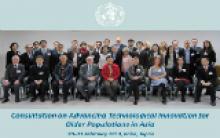
Consultation on Advancing Technological Innovation for Older Populations in Asia Kobe, Japan
WHO Centre for Health Development in Kobe hosted the first Consultation on Advancing Technological Innovations for Older Populations in Asia.
Ageing has now become one of the world’s greatest challenges and hence prime ground for innovations. A WHO priority is to enable aging population to remain healthy, active and independent for as long as possible. Medical and Assistive devices are important tools to help achieve these goals.
With initial funding from the Japanese Ministry of Health, Labour and Welfare, WHO has commissioned tree initial systematic reviews of the needs of older people for medical and assistive devices in height WHO Western Pacific Regional Office (WPRO) countries.
This consultation assembled more than 35 participants representing academia, industry, patients, communities, NGO and experts to discuss the work in progress of the systematic reviews, the known priority needs of older populations for medical and assistive devices, gather additional gaps knowledge on these needs, means how best to use this information to drive further technological and social innovation to create solutions.
After two days of consultation the comity identified the issues to consider advancing technological innovation along with addressing maximizing affordability, removing barriers to innovation and tailoring for individual country contexts and needs in the Asian-Western Pacific Region.
This meeting is paving the way for further consultation, normative work and scientific research to improve knowledge as well as service delivery of health related devices for elderly in Asia and all over the World.

Former Director-General of WHO dies -- health contributions remembered
Dr Hiroshi Nakajima, former Director-General of WHO, died Saturday, 26 January, in Poitiers, France, after a short illness. He was 84.
Following a career of research in neuropharmacology, Dr Nakajima joined WHO in 1974, where he helped develop the concept of essential medicines. He served as Director of the WHO Regional Office for the Western Pacific from 1978 to 1988, and as the Organization's fourth Director-General, from 1988 to 1998.
Many of WHO's most successful current programmes owe a debt to his work during those years. Some programmes connected to his leadership include:
- DOTS (directly-observed treatment, short course), the strategy for TB care and control that WHO started promoting in 1995;
- the use of vector control and bednets to prevent malaria;
- the Integrated Management of Childhood Illness Initiative; and
- the expansion of the global programme for childhood immunization.
Among his many achievements, Dr Nakajima initiated the creation of the WHO Centre for Health Development in Kobe which was endorsed by the WHO Executive Board in 1995.
”For all of these initiatives, the impact on people's health mattered most to him," said Dr Margaret Chan as she announced the news to WHO's Executive Board meeting currently underway in Geneva. "One of Dr Nakajima's greatest passions was to see polio defeated. We are doing so now, for many good reasons. Let these efforts also be a tribute to his memory."
His contribution to public health was commemorated by the Member States, civil society, staff and others attending the Executive Board with a minute of silence. Dr Nakajima is survived by his wife, Martha Nakajima, and two sons.
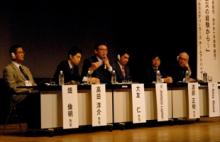
WKC Forum International Health Emergencies
With the increase in number and magnitude of disasters across the world, more external actors have directly involved in humanitarian and health emergency response in an affected area. With the increase in number and magnitude of disasters across the world, more external actors have directly involved in humanitarian and health emergency response in an affected area. WHO presented how and why strengthened partnerships and collaboration mechanisms are key to an effective response.
In conjunction with the 18th Annual Meeting of Japanese Association for Disaster Medicine, WHO Kobe Centre organized an open forum on international health emergencies in Kobe on 18 January 2013.
2012

Parañaque City’s Urban HEART receives AFHC 2012 Award for Health Equity
The Tokyo-based Alliance for Healthy Cities (AFHC) organization awarded Parañaque City (Philippines) the 2012 AFHC Award for Creative Developments in a City Category on Health Equity on the merits of Parañaque City’s implementation of Urban HEART (Health Equity Assessment and Response Tool).
The award was presented during the 5th Alliance for Healthy Cities Summit held on 24 to 27 October 2012 in Brisbane, Australia.
Mayor Florencio Bernabe said “Urban HEART has been an invaluable tool in determining and doing away with the health service inequalities in the different communities in the city.” He explained that Urban HEART, in coordination with the city’s programmes on reproductive health and family planning, contributed to reducing maternal deaths and increasing child immunization in the city.

Walking to school in Japan and childhood obesity prevention: new lessons from an old policy
The Urban Health Governance (UHG) team of the WHO Kobe Centre has just published an article in the American Journal of Public Health, on Japan’s “walking to school practice” in relation to childhood obesity prevention. We suggest walking to school as an important element in reducing childhood obesity for lessons useful to other cities and countries.

Active travel to school, such as walking and cycling, has been identified as an important source of physical activity in children. Many developed countries, including some cities, are now promoting walking to school as a way to increase physical activity, aiming to tackle the epidemic of childhood obesity. Meanwhile, Japan has exceptionally high rates (98.3%) of active transport to school among children in public school compared with other similar-income countries. Japan has a highly established “walking to school practice” that has been implemented since 1953.
In Japan, each municipality has a board of education in charge of public schools, which considers the geography, climate, and the transport situation to determine the method of commuting. Because there is high availability of schools in urban areas and most are located within walking range of the children's homes, walking is the most common method. There are different safety initiatives depending on the district's characteristics. Parents, school staff, and local volunteers are involved in supervision.
The walk-to-school practice has helped combat childhood obesity by providing regular physical activity. Recommendations to cities promoting walking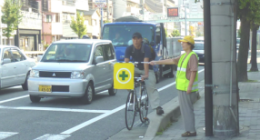 to school are (1) base interventions on the existing network of schools and adapt the provision to other local organizations, (2) establish safety measures, and (3) respond specifically to local characteristics. Besides the well-established safety interventions, the policy's success may also be associated with Japan's low crime rate.
to school are (1) base interventions on the existing network of schools and adapt the provision to other local organizations, (2) establish safety measures, and (3) respond specifically to local characteristics. Besides the well-established safety interventions, the policy's success may also be associated with Japan's low crime rate.
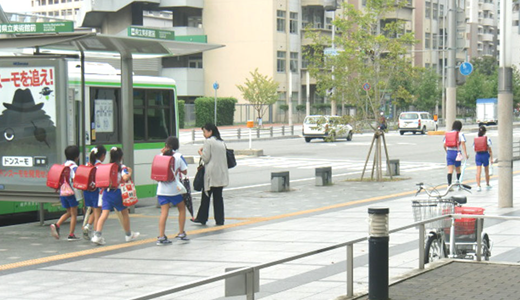
Related links
The American Journal of Public Health
"Walking to School in Japan and Childhood Obesity Prevention: New Lessons From an Old Policy"; Nagisa Mori, Francisco Armada, D. Craig Willcox.
American Journal of Public Health: November 2012, Vol. 102, No. 11: 2068–2073.

WKC course on “Health in All Policies and Noncommunicable Diseases (NCDs)” held at the 5th Alliance for Healthy Cities Global Conference in Brisbane, Australia
The Alliance for Healthy Cities Global Conference is held every second year. This year the conference was organized together with the 10 Day International Healthy Cities Forum from 22-31 October 2012, and it focused on “Healthy Urbanisation: Healthy People – Healthy Communities”.
During the conference, WKC held a 4-hour short course on “Health in All Policies and Noncommunicable Diseases” on 24 October.
The short-course provided the participants with information on HiAP and intersectoral action in cities, using NCD initiatives as an example. Recent research results and lessons learnt about effective interventions were shared.
Programme:
Presentations:
- Opening and background on WKC and UN work Health in All Policies (HiAP)/intersectoral action (ISA) and NCDs
- HiAP/ISA at local level
- Intersectoral responses to childhood obesity in New York, London and Cape Town
- 10 steps to implement HiAP/ISA

